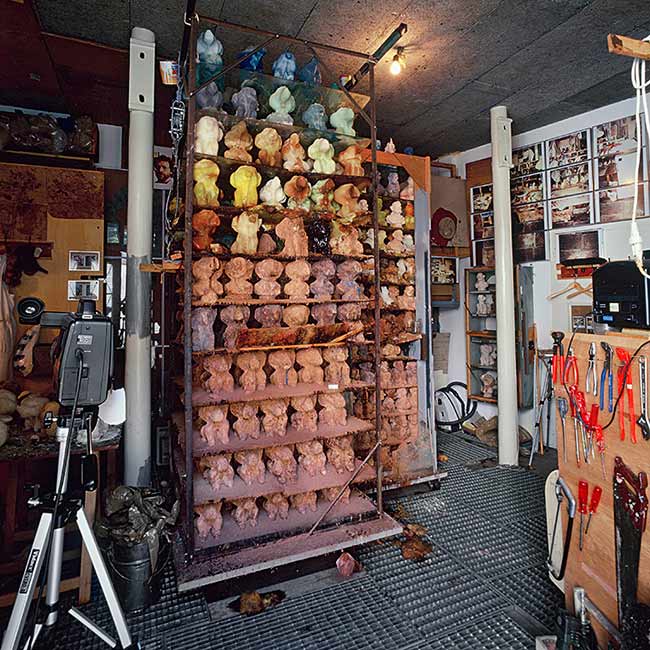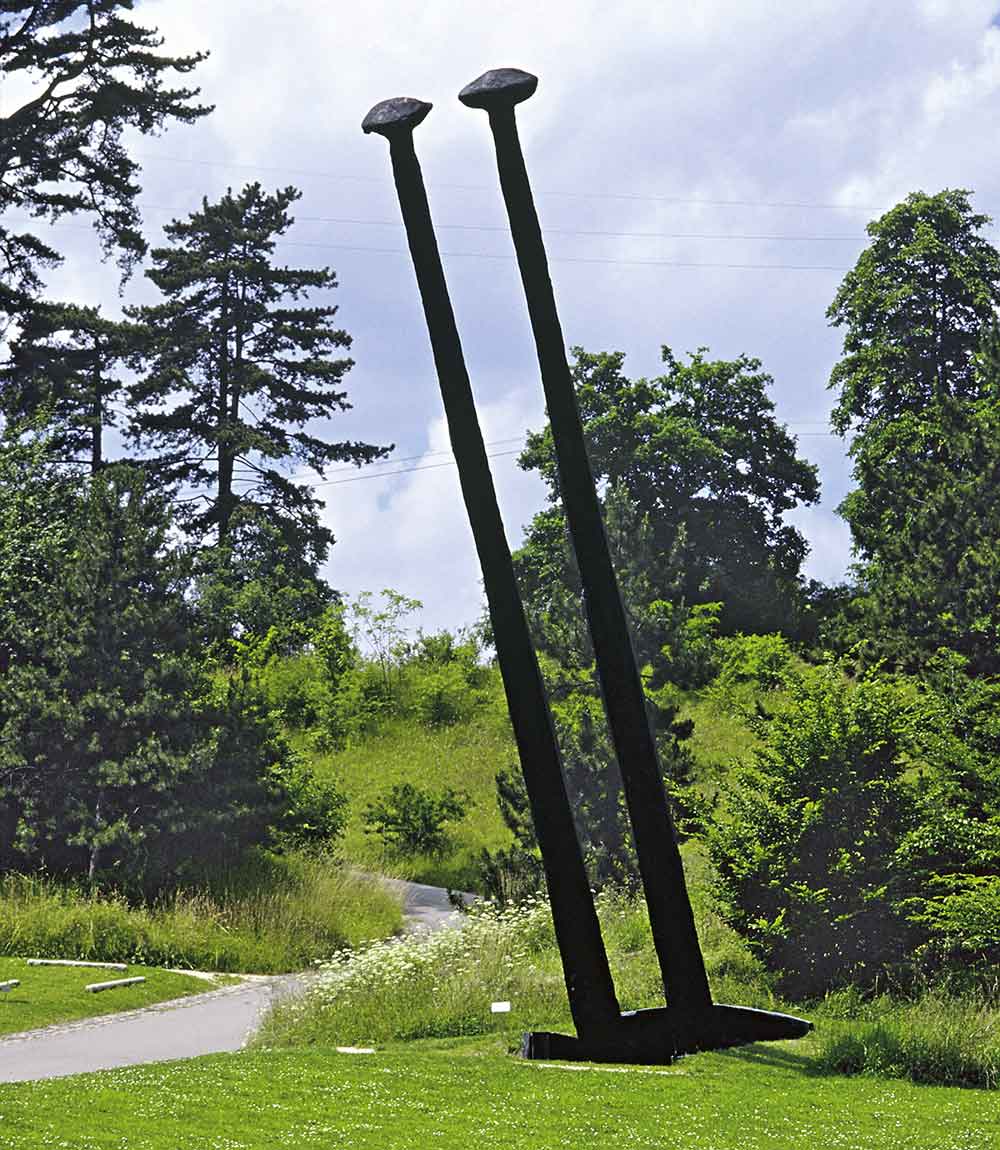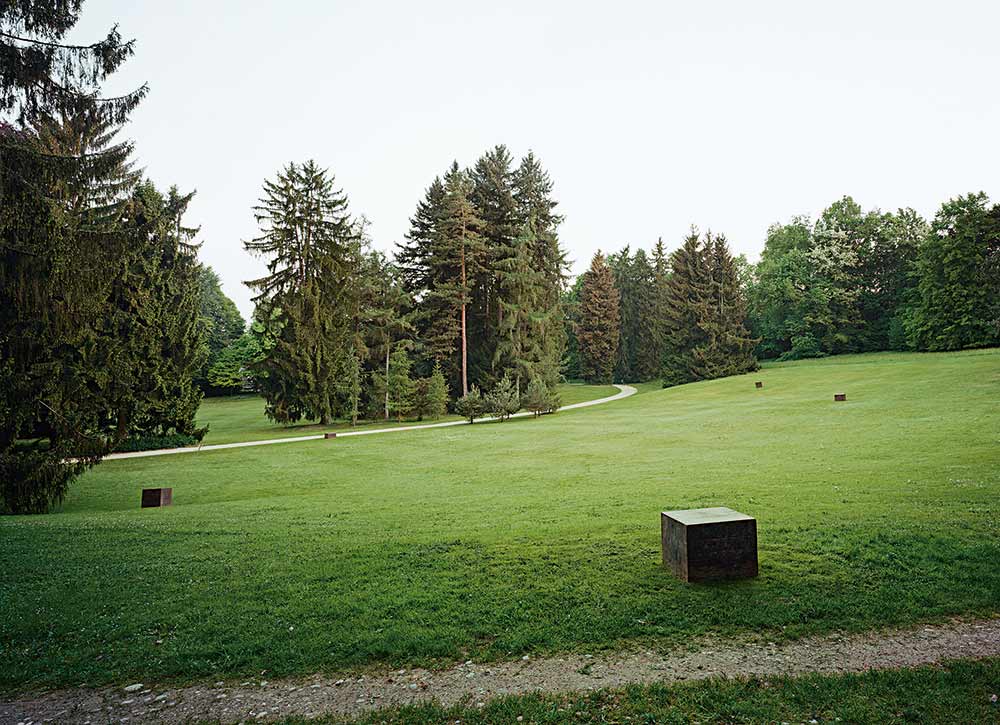The lower level of the Schaulager exhibition area houses the monumental Rattenkönig [Rat-King] (1993), by the sculptor Katharina Fritsch (*1956), and the complex installation Untitled (1995—1997), by Robert Gober (*1954). Two large rooms for these works were included from the outset, in close cooperation with the artists, in the plans for the building. They are permanent installations in the collection of the Emanuel Hoffmann Foundation, and therefore can also be seen by visitors to the public exhibitions at Schaulager. By deciding to accommodate the works in this way, Schaulager guaranteed the continuing accessibility of two complex installations whose dimensions normally make it almost impossible to include them in exhibitions.
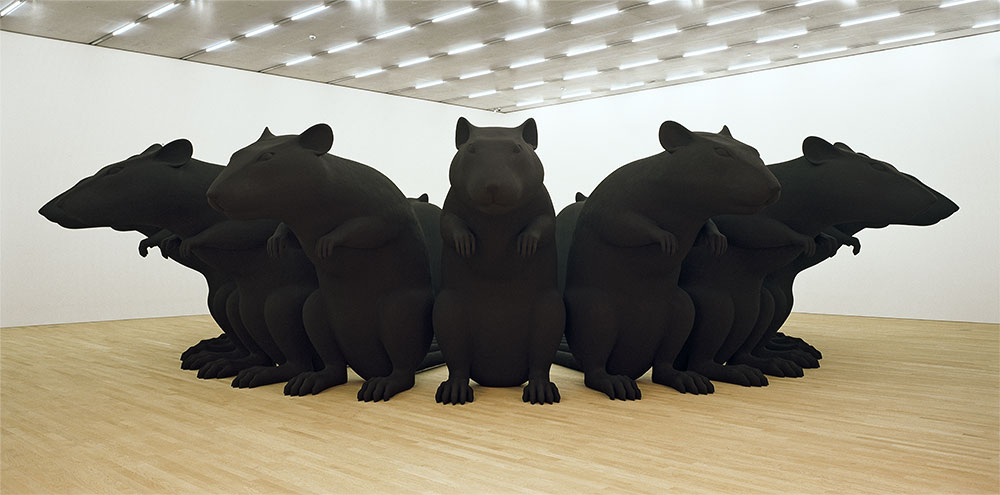
Katharina Fritsch, Rattenkönig, 1993, polyester, pigment, Emanuel Hoffmann Foundation, on permanent loan to the Öffentliche Kunstsammlung Basel (permanently installed at Schaulager, Basel), Zurich, © 2017, ProLitteris, Zurich, Katharina Fritsch.
Katharina Fritsch, Rattenkönig (1993)
This remarkable sculpture consists of 16 identical rats, all of them jet black, sitting side by side on their hind legs. They are arranged in a circle, with their upper bodies leaning slightly outwards and their front paws raised. The giant bodies, twice human size, tower above the visitor. Looking through the dense array of rodents, one sees that their tails are woven into an enormous, ordered knot. Their stance indicates that they are ready to attack, but the impulse is blocked by the tangling of their heavy tails, which renders them immobile. Thus the knotted tails form a centre, surrounded and guarded by the rats.
The inspiration for Rattenkönig dates back to 1989, when Fritsch was staying in New York. She was overwhelmed by the city, with its formations of soaring skyscrapers and plunging abysses. The rat king motif refers to a natural phenomenon – which is extremely rare and, as yet, not fully understood – involving young rats whose tails become intertwined in the nest, to a point where they can no longer extricate themselves. Sightings of these so-called rat kings have been reported since the late Middle Ages, when they were feared as harbingers of the plague. In Fritsch's sculpture, the rat king evokes the image of New York as a Moloch, and alludes at the same time to German mythology.
After exhibiting the monumental work for a year at the Dia Art Foundation in New York, Fritsch also showed it at the Lyons Biennale in 1997 and the 48th Venice Biennale in 1999, shortly before its acquisition by the Emanuel Hoffmann Foundation. Finally, with the construction of Schaulager, it became possible to install the sculpture permanently in Basel.
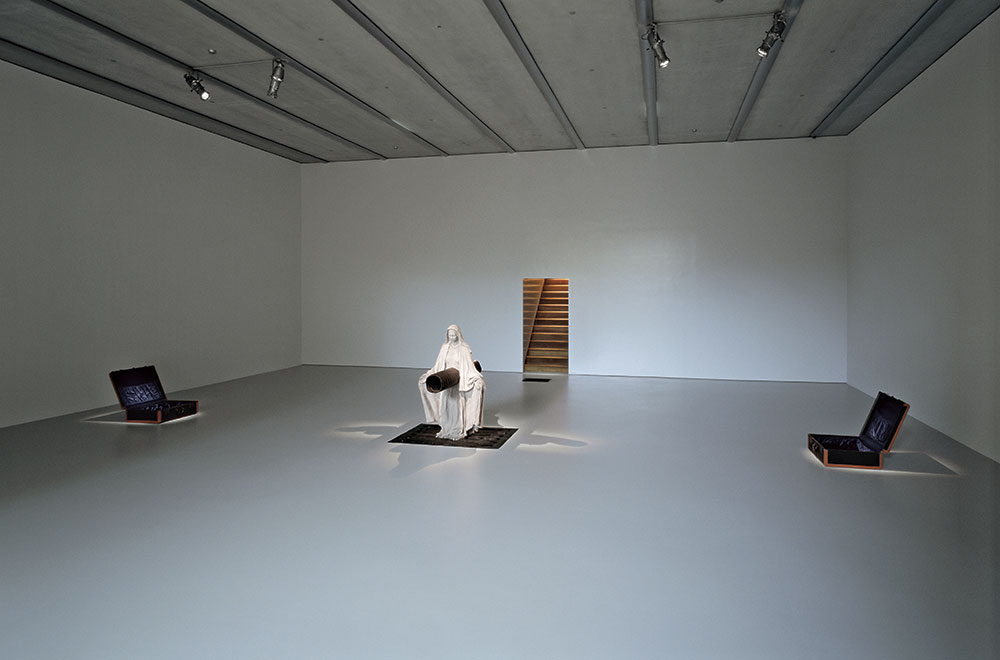
Robert Gober, Untitled, 1995—1997, installation, various materials, Emanuel Hoffmann Foundation, on permanent loan to the Öffentliche Kunstsammlung Basel (permanently installed at Schaulager, Basel), © Robert Gober, photo: Bisig & Bayer, Basel
Robert Gober, Untitled (1995—1997)
In terms of both content and form, Robert Gober's Untitled is a highly complex installation, structured by objects arranged in a cruciform configuration. A cast concrete statue of the Virgin Mary occupies the centre of the room; her arms are outstretched and a culvert pipe pierces her lower body. The hollow pipe directs the gaze to the flight of cedar wood stairs behind the figure, down which a cascade of water pours into the room and floods over the floor before disappearing down a street drain. The rushing noise of the water – the most physically immediate element of the work – can already be heard from a distance. The Madonna also stands on a giant drain grate, cast in bronze. Through the grate, the gaze falls on a tidal pool with naturalistically depicted seaweed, shells, starfish and crabs, and oversized US coins. On either side of the figure, two open leather suitcases rest on two further drain grates, and again the eye is drawn to the ruffled surface of the water below, but this time interrupted by the feet and legs of a man, bearing a swaddled infant.
The sculptures, the significance of water as a life-giving force and an omnipresent element, and the cross-shaped layout of the ensemble, imbue the installation with a sense of the sacred. The work is replete with a multiplicity of visual and auditory clues, alluding to Christian symbolism and the theme of religious belief in ways that disconcert the viewer. The search for determinate meaning proves fruitless, just as the source of the water flowing down the stairs remains unknown.
Originally, Untitled was created as a site-specific installation for a temporary exhibition at the Museum of Contemporary Art in Los Angeles. In 1999, the work entered the collection of the Emanuel Hoffmann Foundation.
- Permanent installations(pdf, 353.94 KB)

